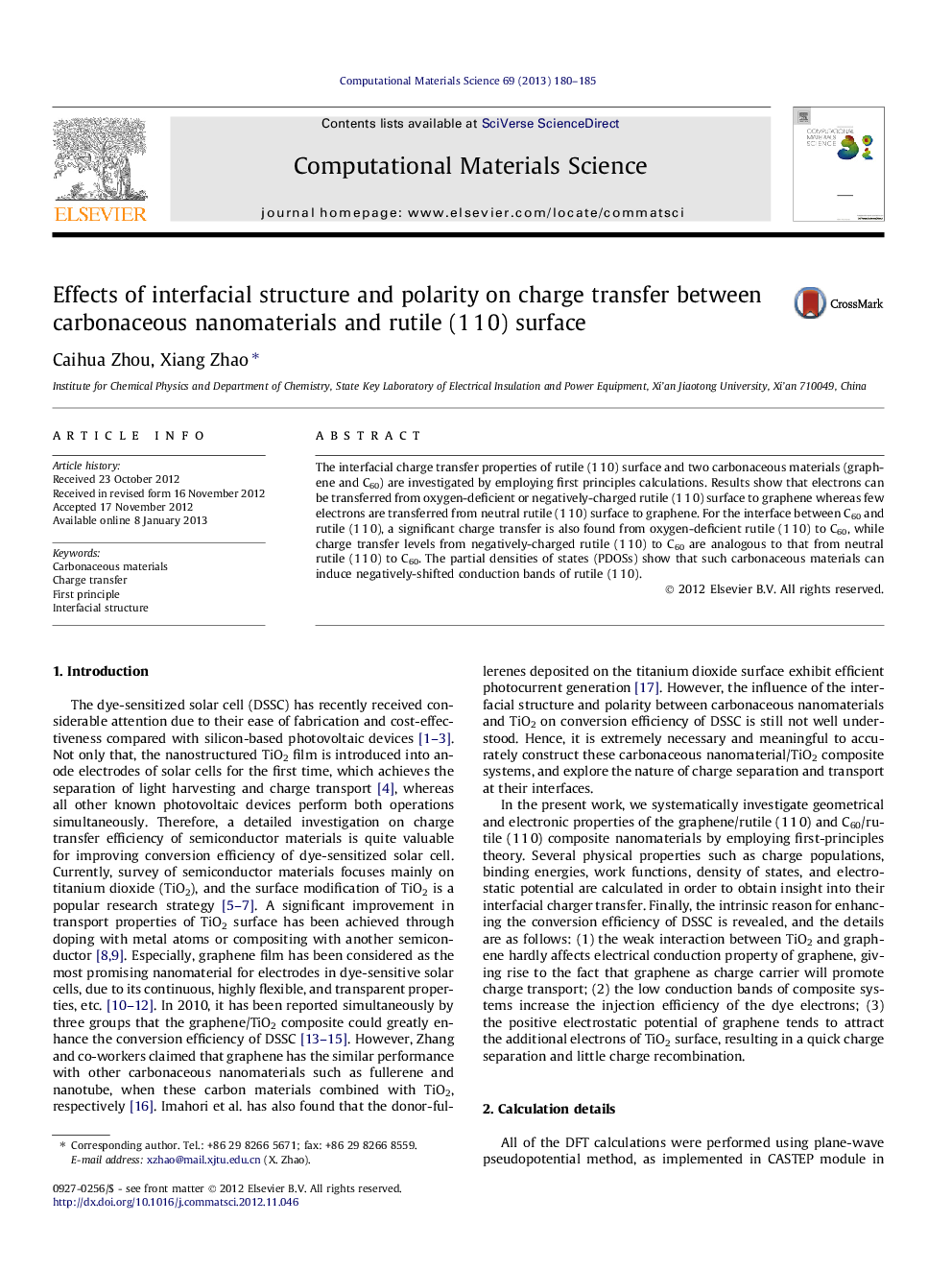| Article ID | Journal | Published Year | Pages | File Type |
|---|---|---|---|---|
| 1561413 | Computational Materials Science | 2013 | 6 Pages |
The interfacial charge transfer properties of rutile (1 1 0) surface and two carbonaceous materials (graphene and C60) are investigated by employing first principles calculations. Results show that electrons can be transferred from oxygen-deficient or negatively-charged rutile (1 1 0) surface to graphene whereas few electrons are transferred from neutral rutile (1 1 0) surface to graphene. For the interface between C60 and rutile (1 1 0), a significant charge transfer is also found from oxygen-deficient rutile (1 1 0) to C60, while charge transfer levels from negatively-charged rutile (1 1 0) to C60 are analogous to that from neutral rutile (1 1 0) to C60. The partial densities of states (PDOSs) show that such carbonaceous materials can induce negatively-shifted conduction bands of rutile (1 1 0).
Graphical abstractThe interfacial structure and polarity influence greatly the charge transfer properties between the rutile (1 1 0) and carbonaceous nanomaterials (graphene and fullerene). 3d electrons of titanium can transfer from oxygen-deficient rutile (1 1 0) surface to carbonaceous nanomaterials efficiently, but it hardly transfers from perfect rutile (1 1 0) to them. Similarly, excess electrons in rutile (1 1 0) surface also tend to transfer to carbonaceous nanomaterials.Figure optionsDownload full-size imageDownload as PowerPoint slideHighlights• Excess electrons in oxygen-deficient rutile (1 1 0) can be transferred to graphene. • Graphene keeps excellent conductivity in graphene/rutile (1 1 0) composite. • Carbonaceous materials can induce a negatively-shifted conduction band. • Carbon cage exhibits a distinct localization in fullerene/rutile (1 1 0) composite.
